Patna: The wonder of the cosmos had always called Kshitiz Kant, Class IX student at Radiant International School in Patna. In 2016, at just six years old, he visited the Bengaluru planetarium. It was his first visit to a planetarium. That visit sparked a passion that carried him across India—from Kolkata to Delhi, Kanyakumari to Chennai—until, finally, in January 2025, he arrived at the planetarium in Patna.
“Patna’s planetarium is outstanding. The 360-degree dome, coupled with the 3D 8K technology, felt like I was aboard a satellite, floating in space,” he said, remembering his winter outing at the Indira Gandhi Planetarium that was first opened for the public over three decades ago in 1993. Kshitiz’s father, a station master, was frequently relocated, and with each new posting, he got an opportunity to explore the science centres.
When this reporter spoke to him, Kshitiz was planning to make another visit to the planetarium in his summer vacations.
This public science infrastructure has remained relevant among the people of Bihar and the government’s efforts to transform shows it realises the importance of this place. The once-familiar landmark has now evolved into a gleaming glass tower. Gone are the days of 2D lamp projections and the hour-long outdated show that only talked about stars and planets. Spread across 13 acres along Bailey Road, the planetarium now boasts of cutting-edge 3D 8K resolution laser technology, an interactive astronomy gallery, and a redesigned seating arrangement, reduced from 261 to 225. It’s an immersive experience for visitors with power packed 30-minute shows on the latest NASA-acquired films, available in both Hindi and English.
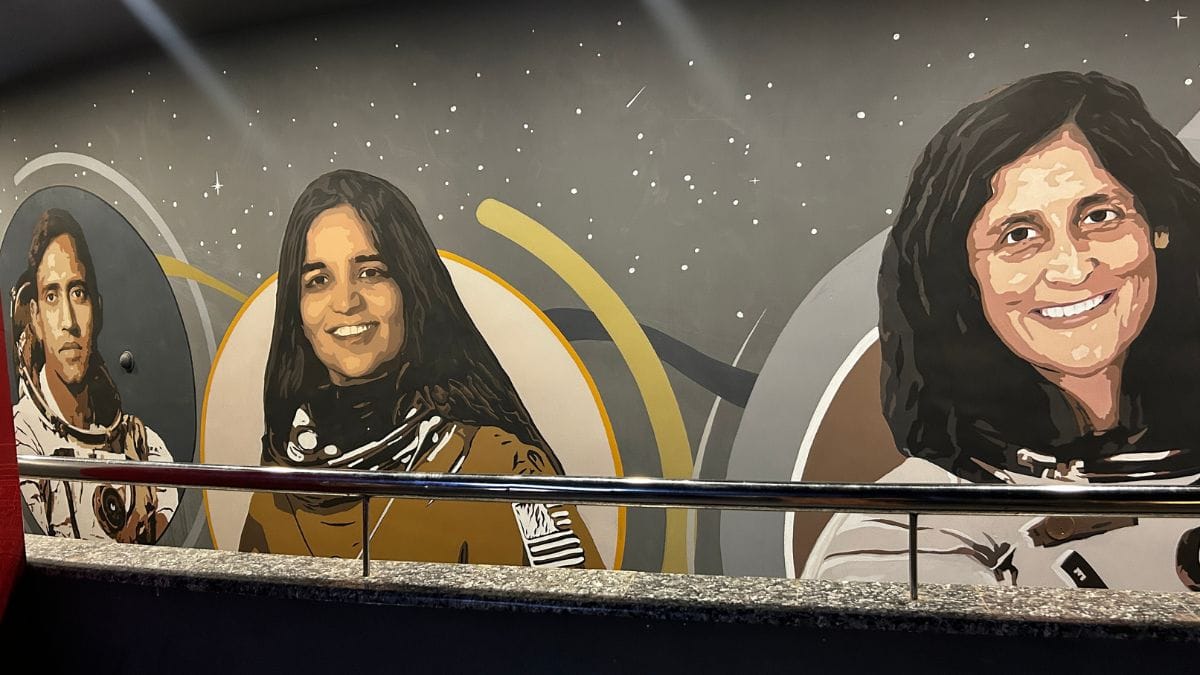
“After a two-year redevelopment process, it was opened for the public in April 2024. It draws more than 1,500 visitors daily, with peak crowds reaching 2,000,” said Project Director Dr. Anant Kumar.
In 2022, the state government had sanctioned Rs 36 crore to breathe new life into the old infrastructure.
Also read: EtherealX to Agnikul, Indian startups enter space defence domain. Op Sindoor was the pivot
Taramandal 2.0
Eight shows each day and a better seating capacity means long queues outside the ticket counters. Vloggers from across the country flock to capture and share its wonder, spreading the excitement far beyond Bihar’s borders in the reels and YouTube videos.
“The investment did not merely restore the structure—it redefined how Bihar perceives science and astronomy,” said Kumar, proudly emphasing Bihar is also the land of Aryabhatta.
Before him, Dr. Chandra Shekhar Singh briefly held the post of project director from January 2019 to December 2019.
Singh recalled how, in the 1990s, Bihar had introduced 2D technology from Japan, a cutting-edge advancement at the time. However, as the years passed, the technology became outdated, and whenever the machines malfunctioned, there were no local mechanics available to replace their parts, everything had to be sourced from outside the country.
“Shows were put on hold for days and even months due to such malfunctions. In this backdrop, the idea to upgrade and modernize emerged in 2013, initiated by the Chief Minister,” said Singh.
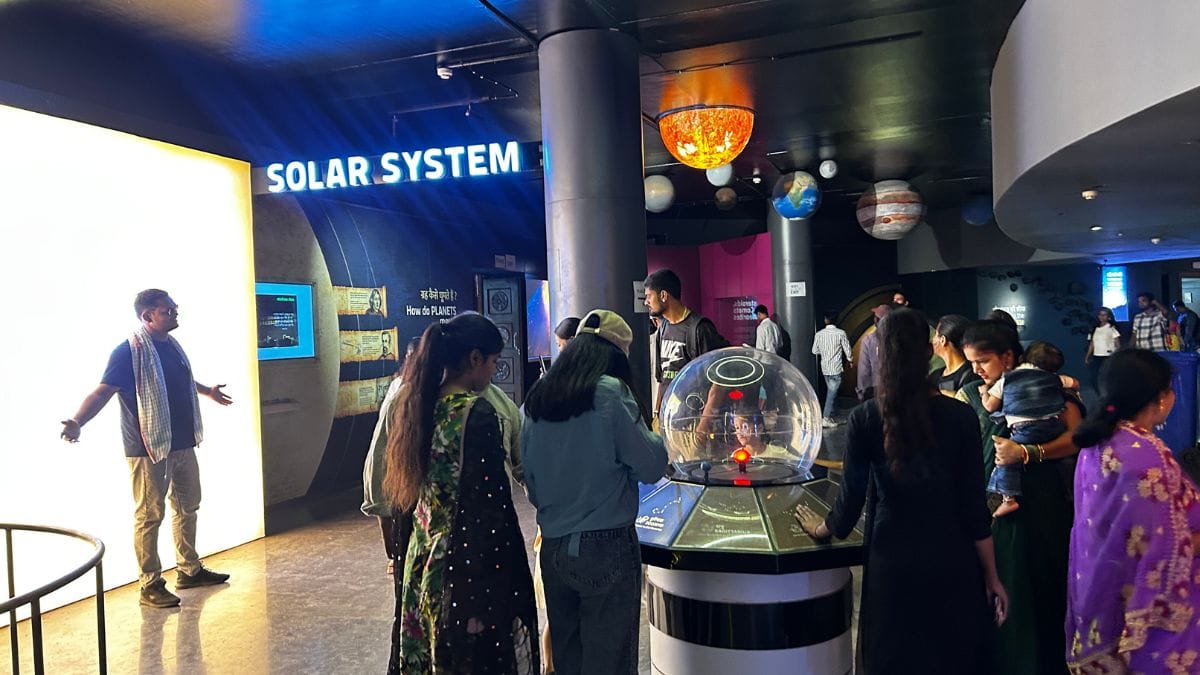
According to him, decisions on which projector to install and which technology to adopt remained uncertain, especially as 3D technology was evolving rapidly after 2010, becoming mainstream in fields like medicine and aerospace.
“Finally, during my tenure in 2019, as the world was preparing to introduce commercial 3D 8K technology, we finalised the tenders.” he added.
Kumar is confident the Patna planetarium is the best.
“If there were rankings, we would come first,” said Dr Kumar.
The impact of its transformation has been undeniable. Visitor numbers have nearly doubled, surpassing 2,000 daily, according to Shiv Shanker Sahay, Nodal Officer.
“Until 8K technology is upgraded to something even more advanced, we remain the most cutting-edge planetarium in the country,” he remarked.
The planetarium has generated Rs 3.5 crore in revenue through ticket sales, parking, and exhibitions, more than enough to sustain its 50-member workforce, including operators, guards, and support staff.
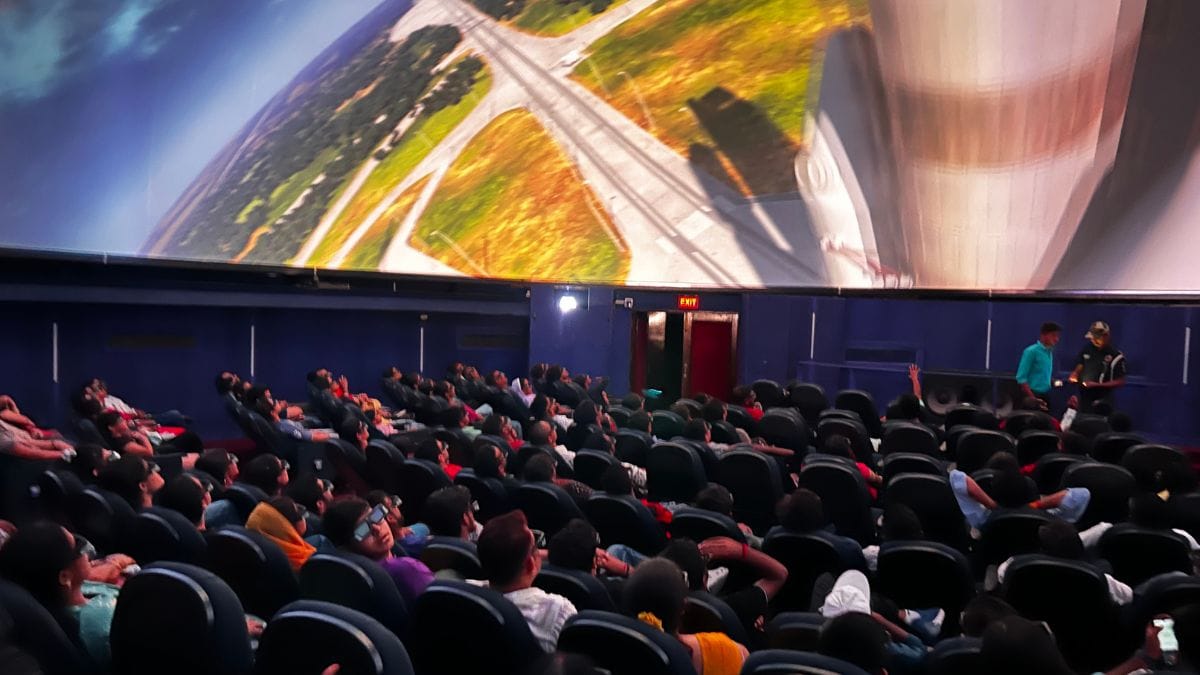
Also read: Inside CCMB Hyderabad—where scientists turn elephant blood, tiger bones into criminal evidence
‘Lacks interaction and fun’
Not all praise around the famous public science infrastructure is unchallenged. The missing link, educators argued, is the active engagement of schoolchildren—something Bihar Museum has done masterfully.
“Our kids love visiting the Bihar Museum and science centre but the planetarium, though modernised, still lacks incentives and curated programs for children,” remarked Principal Manisha Sinha of Radiant International School.
The last school batch that visited the planetarium was before it was shut down for renovations.
For nearly a decade, it had been reduced to hosting silk saree exhibitions, said Sinha.
“After 2015–16, it was hardly a planetarium,” she recalled. “Now that it has been upgraded, it is ready to inspire a new generation, only if the right programs are put in place.”
Soumya, a 14-year-old Class IX student at Radiant International School, has a deep fascination for science. Her quest led her to visit the newly revamped planetarium twice, without the school’s curated trip. She watched two shows—Life of Trees and Voyagers. But during her visits, she noticed something intriguing.
“For me, the astronomy gallery was very interactive and fun, but it felt underrated to other visitors—so many people were just busy taking selfies,” she reflected. “The presence of AI makes me wonder about how the future will look like now.”
Though each visit to the planetarium has left her curious to learn more about science, space, and the survival of humankind, she felt that it needed to be more than just a movie show or an astronomy gallery.
“I wish there had been a souvenir section too—something I could take home,” she said. “A guide needed to narrate the stories of each object that stands in the gallery in an interesting way.”
Kshitiz, her classmate, and a science enthusiast, agreed.
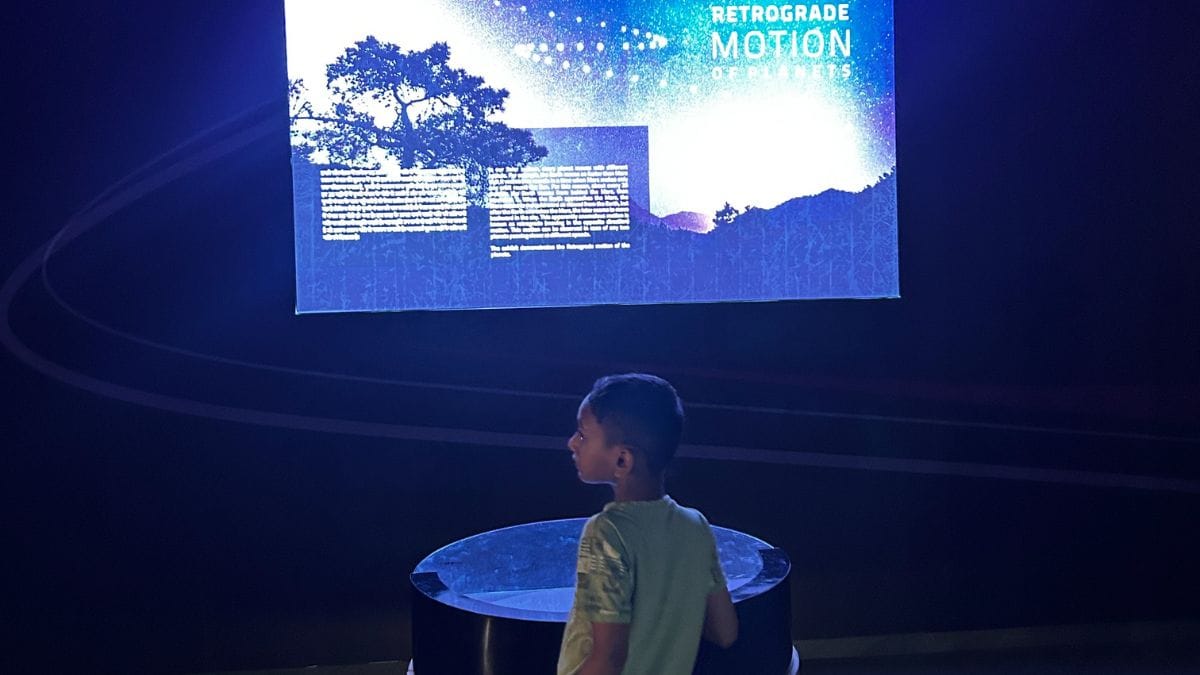
“To improve the experience, there should be science-based activities and quizzes. Right now, it feels more like a cinema hall, where many adults simply hoot, diminishing the joy of discovery,” he complained.
Exciting developments are underway, assured Shiv Shanker Sahay, Nodal Officer.
“A souvenir shop is set to open, and the two parks within the premises will be transformed into astronomical parks,” he told ThePrint, adding that the planetarium recently showcased the celestial event through a telescope, where three planets—Saturn, Venus, and the Moon—aligned between 20 May and 24 May 24 2025.
“We will also have a 25-seater virtual reality theatre installed,” Sahay added. The project is expected to be completed within a year, with further expansions planned.
Responding to the demands of children and schools, the project director stated that the planetarium had offered free shows for the first month.
“We provide tickets at Rs 20 for students if they obtain a receipt from their principal for a visit,” he said.
However, former project director Singh emphasised the need for creative engagement beyond just movie screenings.
During Chandra Shekhar Singh’s tenure, a science scholarship program was introduced, awarding Rs 10,000 to winning student groups. A total of 500 groups benefited before the initiative was discontinued.
“You cannot rely solely on a science center to satisfy children’s curiosity,” he commented.
Also read: Indians are gaming US immigration to get Einstein visas meant for top scientists
A new era for Bihar
Patna planetarium’s fate was lost in oblivion. But things started to change sometime in 2021 when Kumar Ravi, a 2005 batch IAS officer, took charge in as Bihar’s Building Secretary. In the years that followed, he emerged as the face behind Bihar’s infrastructure transformation, leading projects that shaped collectorates, convention halls, museums, and the iconic Bapu Tower. Among his many projects, the revival of the planetarium stands out, his colleagues pointed out.
“The planetarium stood defunct, forgotten for the last many years—until 2021, when the Department of Science and Technology (DST) proposed its revival,” Ravi recalled.
“The Building Construction Department (BCD) undertook a sweeping overhaul—facade lighting, a new guest house, and landscape enhancements,” he added. For Ravi, this revival was deeply personal. “I first set foot in this planetarium as a school student, like many others, and witnessing its revival was truly exhilarating.”
Under Ravi’s tenure, BCD also spearheaded the development of a brand-new planetarium in Darbhanga. He also oversaw the ongoing construction of Dr. A.P.J. Abdul Kalam Science City, a state-of-the-art science center being built in Rajendra Nagar, near Moin-ul-Haq Stadium, on a 22-acre site. With a budget of Ra 640 crore, the science city is expected to be completed by November 2025.”

“The planetarium should be seen in the context of the science city because, once it comes to life, it will offer children an experience unlike anything before,” said Dr. Chandra Shekhar Singh, who is currently a principal at a polytechnic college. He is hopeful that this will mark the beginning of a science-based movement.
Also read: Rajasthan village gets a dream school from Mumbai business tycoon. Sparks a rush in Rajsamand
Imported tech
In 2022, Kumar Ravi and Lokesh Kumar Singh, then Secretary of the Science and Technology Department, alongside Project Director Dr. Kumar, travelled to Germany and France, on a hunt to bring the latest technological innovations to India.
During this trip, they zeroed in on Carl Zeiss, a renowned German manufacturer specializing in optical, mechanical, and digital projection systems. From this collaboration, the planetarium acquired an advanced digital 2D/3D RGB laser-based projection system, setting a new benchmark in immersive astronomy experiences.
To modernize the facility, a team of eight specialists from Kolkata was enlisted. Their work began with extensive waterproofing of the dome’s outer surface to prevent seepage, followed by critical structural repairs to reinforce the aging building.
“A custom-designed screen for the dome’s inner surface was sourced from the United States,” shared Dr. Kumar, highlighting the efforts made to enhance the planetarium’s visual experience.
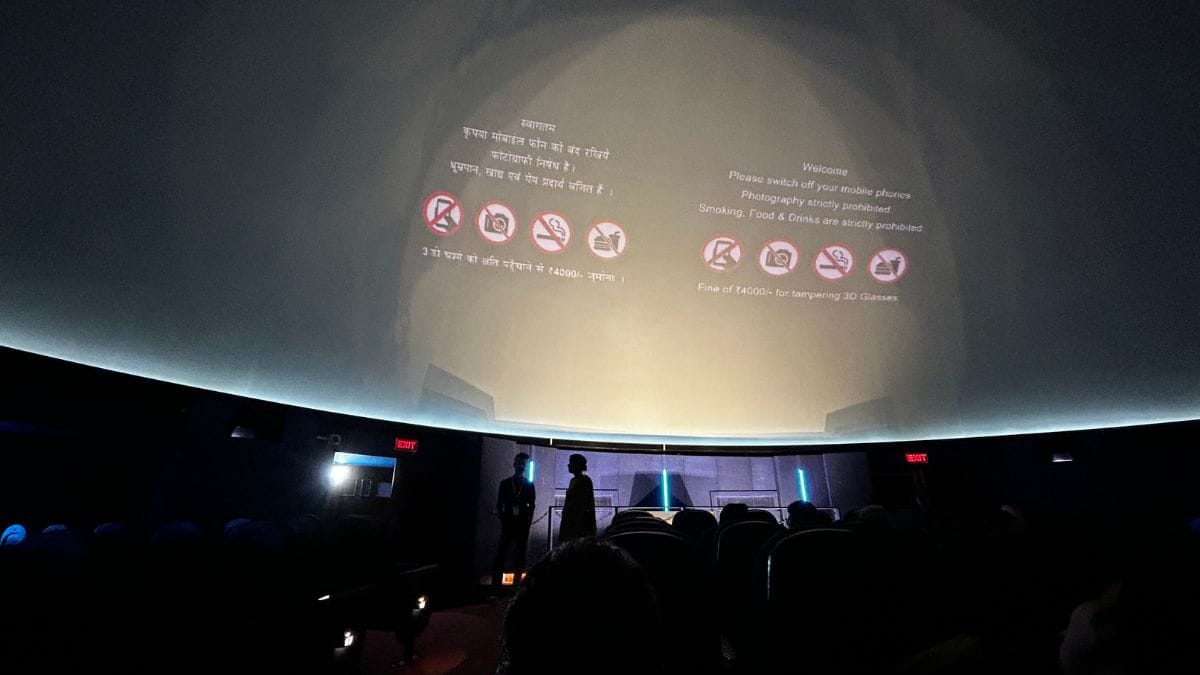
The LED-based projector, featuring multiple lenses, brings millions of stars to life on the 16-meter projection dome, precisely angled on an aluminum screen.
To add value beyond projections, a high-capacity optical telescope was procured through the National Council of Science Museums for Rs 10 lakh, now proudly displayed in the astronomy gallery.
The planetarium also features 25 interactive exhibits, showcasing both advancements and historic discoveries, including the Big Bang Theory, Vikram Lander, Aditya-L1, and a statue of Aryabhata.
“Among all planetariums in India, only those in Kolkata and Karnataka feature this latest 3D projection system—but they don’t have 8K resolution,” noted Project Director Dr. Kumar.
Also read: 6 years, 400 trials, and a breakthrough—how Kashmir gave India its first gene-edited sheep
‘International standards’
Gautam Kumar, a 34-year-old Data Scientist and a native of Bihar, felt a wave of nostalgia when he stepped into the Indira Gandhi Planetarium in December 2024. This place is etched into his childhood memories, just like it is for many others who grew up in Patna and other parts of Bihar.
His first visit had been in the early 2000s, a time when visiting the planetarium was more than just a day out. Back then, it wasn’t just about science—it was about the thrill of sitting in an air-conditioned hall, witnessing celestial wonders in 2D projections, with tickets priced at just Rs 10 or 15.
Now, decades later, Kumar returned—this time, not as a wide-eyed child, but as a scientist, bringing along his three-year-old nephew and five-year-old niece to experience the magic.
“The 3D shows were breathtaking,” he remarked. A seasoned science museum traveller, Kumar had visited Birla Planetarium and Jawaharlal Nehru Planetarium, but this experience felt different, he said.
“My brother, who lives in the United States, was also amazed by the experience. He said it stands on par with international planetariums, if not better,” Kumar shared. “For me, even the astronomy gallery stood out.”
Lord Khan, 46, a Political Science graduate and now a businessman, vividly remembers his first visit to the planetarium. “There wasn’t much to explore in Patna back then. Taramandal was one of the few places to visit.”
This time, he came with his two sons, Yashav and Arif, both science students in classes X and XII, respectively. But what made this trip to Taramandal unique was that it wasn’t the young boys leading the way like the earlier times—it was his sister, Kiran Khan, 50, who convinced the family of four to visit the planetarium, in the scorching May heat.
She had once experienced the grandeur of Kolkata’s planetarium and longed to see how Patna’s compared. Standing near the entrance, Kiran Khan noticed something unusual—more adults than children gathering outside the gates.
Inside the auditorium, adults outnumbered children. The echoes of excitement were missing. The joyful shouts were replaced by quiet observation. The scene was a stark contrast to decades ago, when children experienced planetariums as places of magic, wonder, and limitless possibility.
“For kids these days, the entire universe is at the palm of their hands,” Kiran Khan commented.
“Today, bringing them to science museums and planetariums has become a challenge,” said Krishan Mohan, a commuter operator on the ticker counter.
The reactions inside the hall are not quite the same as they were years ago, he mentioned.
Planetariums have transformed into entertainment hubs and are not just places of education. Visitors take selfies under the dome and in the gallery. Vloggers declare it a must-visit experience for a mere Rs 100.
“There is a need to spark curiosity and pull the children away from screens,” said Kiran Khan.
The article is part of a three-part series on state of planetariums in India. Read all articles here
(Edited by Anurag Chaubey)



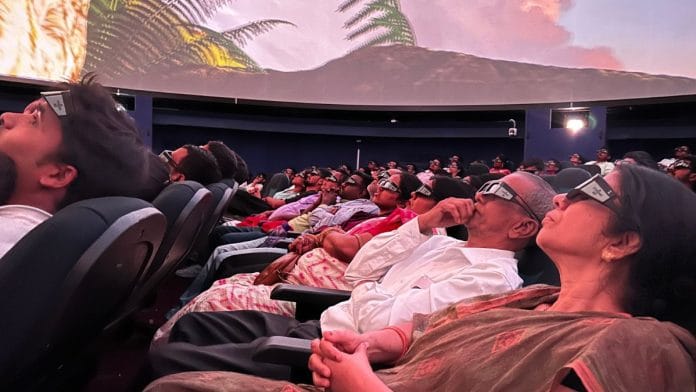



The article is well written and very factual. The initiative of Bihar Government is praiseworthy indeed. It, however, misses the name of the agency which actually upgraded the facility and added the new astronomy gallery, the National Council of Science Museums. Due credit should have been given to NCSM for the turnaround that it brought to this planetarium to convert it to the world class facility.